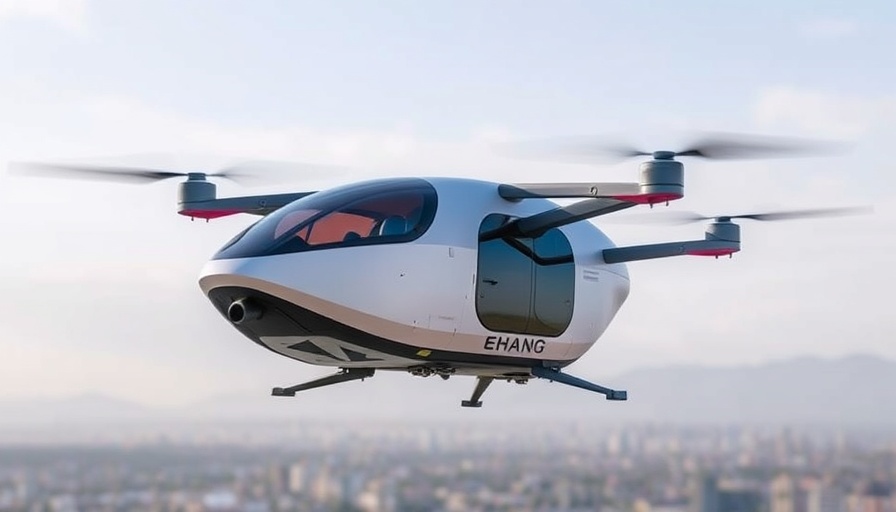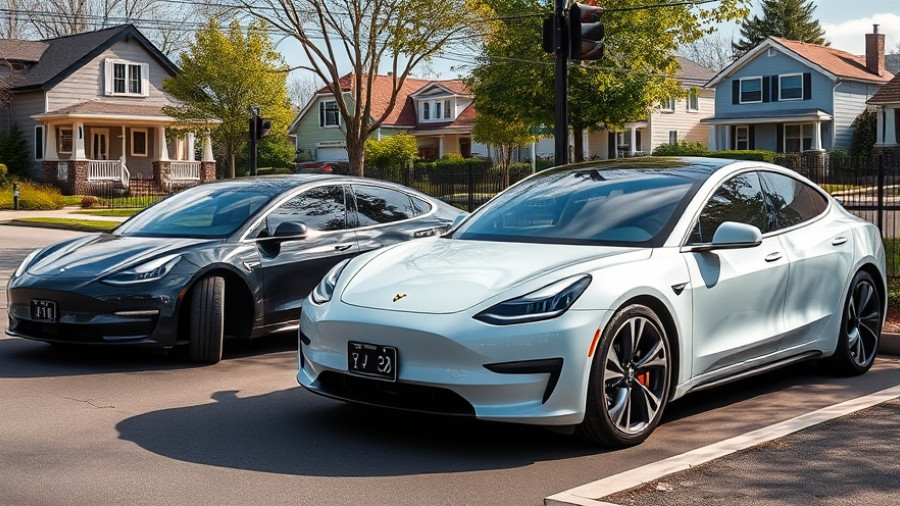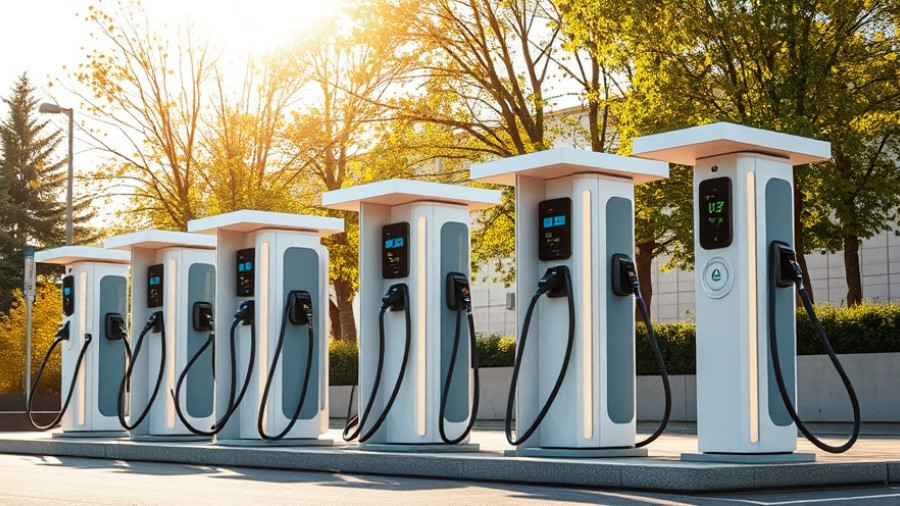
The Rise of Autonomous Air Mobility
The landscape of urban transportation is shifting dramatically as innovative companies like Ehang introduce autonomous air taxis into our skies. Recent developments highlight how Ehang's EH216-S, the first of its kind to receive regulatory approval for commercial operations, is poised to revolutionize the way we think about travel in dense urban environments.
Partnership with Gotion High-Tech: A Game Changer
To enhance the operational capabilities of their vehicles, Ehang has formed a strategic partnership with Gotion High-Tech, a well-regarded battery cell manufacturer affiliated with Volkswagen. By equipping its EH216 series with Gotion's cutting-edge 4680 round battery cells, Ehang aims to optimize flight ranges and enhance power outputs. This collaboration not only boosts the EH216's performance potential but also signifies a pivotal step towards commercializing urban air mobility (UAM).
The Future of Ehang and Urban Air Mobility
As cities expand and urban populations increase, traditional modes of transportation are becoming feverishly congested. Ehang's initiatives come at a crucial juncture where urban planners are eager for effective solutions to these mounting challenges. With the planned commercial passenger routes above bustling transport hubs in Shanghai, the company’s efforts herald a new frontier in transportation whereby air taxis seamlessly integrate with existing urban infrastructures.
Broader Implications for the Low-Altitude Economy
Beyond passenger transport, Ehang’s partnership with Gotion is also aimed at developing low-altitude logistics networks—an essential component in the functioning of a modern urban economy. This reflects a broader trend in China, where the government has been actively promoting drone technology for use in various sectors, including emergency services and logistics. By positioning itself at the forefront of this evolving landscape, Ehang is not just responding to market demand but also influencing regulatory frameworks surrounding urban air mobility.
Technological Advances and Market Readiness
The future of Ehang hinges on successfully navigating an array of technological and regulatory hurdles. The introduction of the Gotion battery technology signals a leap in performance capabilities, enabling the EH216 series to operate efficiently within urban settings. Companies leveraging advanced battery technologies are expected to play a crucial role in shaping a safer, sustainable low-altitude transportation ecosystem, essential for the successful implementation of air taxis.
Cultural and Regulatory Challenges Ahead
While Ehang’s technologies are groundbreaking, the path toward widespread acceptance of air taxis is layered with challenges. Concerns about air safety, legislative obstacles, and public acceptance of autonomous flying machines remain predominant. As such, Ehang’s partnership with Gotion is not only about technological superiority but also about earning the trust and compliance of regulators and communities worldwide.
Conclusion: Embracing the Future
As Ehang and Gotion embark on this ambitious journey, the evolution of air taxis represents a critical junction for urban transport. Understanding these innovations positions homeowners and businesses, particularly those interested in solar and green energy, to engage with emerging transport trends that could harmonize with energy sustainability initiatives. By aligning battery advancement with solar energy solutions, we can dream of a future where our transportation footprint aligns better with our green aspirations.
Explore the latest on solar-powered charging stations and the trend toward green energy as we transition to a future heavily reliant on advanced technological solutions in mobility.
 Add Row
Add Row  Add
Add 



Write A Comment